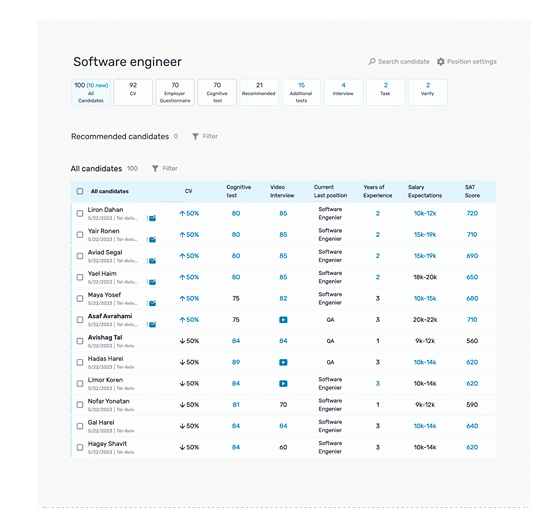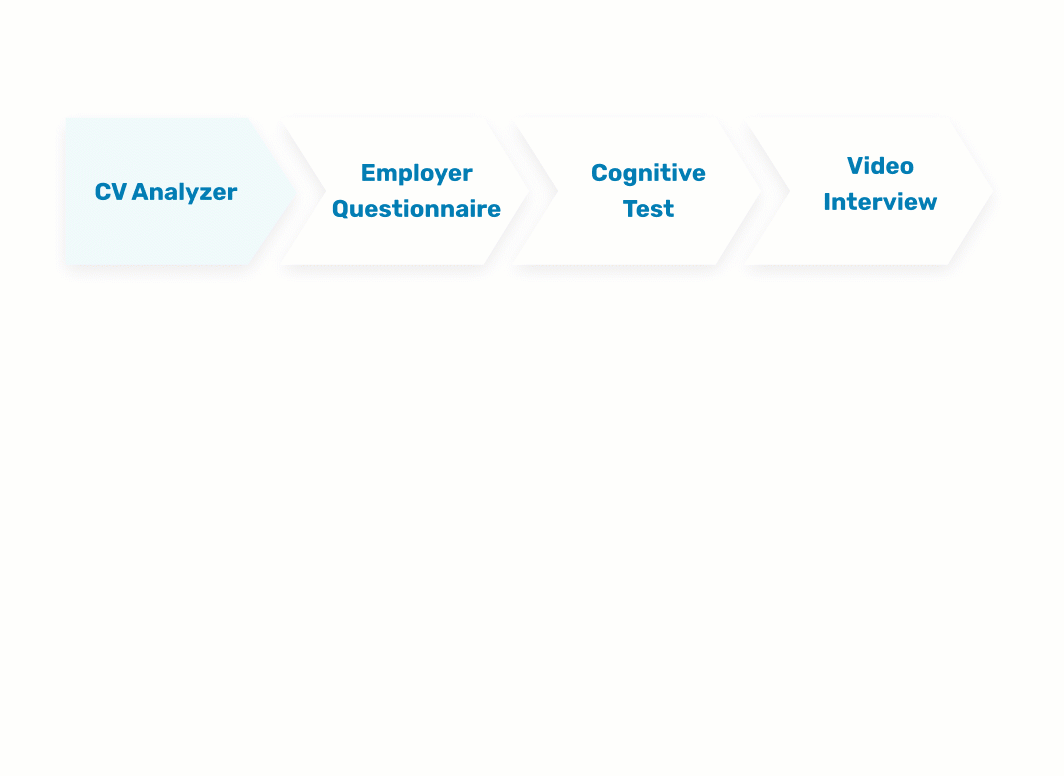 Improve Your Hiring Process with an ATS Hiring Solution
Improve Your Hiring Process with an ATS Hiring Solution
Finding the right candidates in today’s competitive job market requires an efficient, structured approach.
According to SHRM, from 2022 to 2023, three out of four organisations struggled with recruiting for full-time positions.
ATS hiring systems are the cornerstone of modern recruitment, helping businesses of all sizes save time, reduce costs, and secure top talent.
What is ATS Hiring?
ATS hiring involves using an Applicant Tracking System to manage the recruitment process. These tools automate key steps such as job postings, resume screening, candidate tracking, and interview scheduling. With ATS, hiring managers can effectively handle large volumes of applications and make data-driven decisions that support their recruitment strategies.
Key Features of ATS Hiring Systems
1. Centralized Candidate Database
ATS hiring software collects and stores candidate applications in a single repository, allowing for seamless candidate management.
2. Resume Parsing and Keyword Matching
ATS tools automatically parse resumes, identifying relevant keywords and matching candidates with job descriptions.
3. Automated Workflows
From posting jobs to sending offer letters, ATS simplifies time-consuming tasks, ensuring an efficient hiring process.
4. Data-Driven Insights
With real-time analytics, ATS hiring platforms provide hiring managers with valuable metrics, helping them refine strategies and track the time to hire.
5. Enhanced Candidate Communication
Automated messaging tools within ATS keep candidates informed about their application status, improving the overall candidate experience.
Advantages of Using an ATS for Hiring
- Save Time: Automation minimizes manual tasks such as resume screening and candidate communication.
- Hire Faster: Streamline processes to reduce the time-to-hire for open positions.
- Reduce Bias: ATS systems use standardized criteria, promoting diversity and inclusion throughout the hiring process.
- Improve Collaboration: Recruiters and hiring managers can share notes and feedback within the system, ensuring transparency.
How ATS Hiring Supports Specific Needs
For organizations managing high volumes of applications, ATS hiring systems simplify operations:
- Job Postings Across Multiple Platforms: Distribute listings to job boards, social media, and career websites with just a few clicks.
- Schedule Interviews Effortlessly: Manage interview slots and reminders, enhancing candidate engagement.
- Onboarding Process Integration: Transition smoothly from hiring to onboarding, ensuring new hires are set up for success.
ATS vs. CRM
ATS primarily focuses on managing the application and hiring process, targeting active job seekers who apply for open positions within the organisation. In contrast, Customer Relationship Management (CRM) systems encompass broader relationship management, including interactions with both active and passive candidates, past applicants, and existing employees to build and nurture talent pipelines and enhance employer branding.
Choosing the Best ATS Hiring Software
- Customizable Workflows: Ensure the software adapts to your unique recruitment needs.
Integration with Existing Tools: Look for systems that work with other platforms like HR software and email communication tools. - Scalability for High Volumes: Choose a solution that grows with your business and handles large volumes of applications.
- Diversity and Inclusion Features: Prioritize software that helps promote a diverse workforce.
- Reliable Customer Support: Ensure the vendor provides robust support for a seamless experience.
Enhancing Recruitment Outcomes
- ATS hiring tools are indispensable for businesses aiming to meet specific hiring needs, enhance candidate pipelines, and improve their recruitment process. With features like resume parsing, candidate screening, and relationship management, ATS hiring solutions empower organizations to attract the right candidates and foster a seamless recruitment journey.
The Real Deal: Why Our ATS Stands Out
After we’ve explored the benefits of smart hiring tools, let's put them to work for you!
Recruitment – the Noam Institute's ATS to upgrade your talent search, making life easier for both hiring teams and job seekers. Here's what it offers:
- Spot Top Talent Early: Get clear, quick insights to pinpoint standout applicants before you even pick up the phone.
- One-Stop Hiring Hub: Post jobs across multiple sites with a single click. Get a bird's-eye view of all your hiring activities on one screen. Your whole team can access applicant information, test scores, and feedback, adding their thoughts and following progress in real-time.
- Smooth Sailing for Applicants: Give candidates a sleek, transparent application experience. Keep top talent engaged by keeping them in the loop. Turn your hiring process into a polished showcase of your company culture.
- Elevate Your Talent Search: Use cutting-edge features like auto-screening, AI resume analysis, tailored skills tests, and smart candidate ranking to find a better fit faster.


FAQs
An Applicant Tracking System (ATS) is a software application companies use to streamline recruitment processes. It helps manage and automate the hiring workflow, from job postings to applicant evaluations. An ATS sorts through resumes, filtering out candidates based on specific criteria, such as keywords, experience, and qualifications. This technology is crucial in modern hiring, as it allows employers to efficiently handle large volumes of applications, ensuring only the most relevant candidates are considered.
Additionally, an Applicant Tracking System often integrates with other tools to support tasks like interview scheduling, communication with candidates, and compliance tracking. For job seekers, understanding how an ATS works is vital for optimizing resumes and applications to ensure they pass through these automated systems successfully.
Yes, ATS (Applicant Tracking Systems) are still widely used. They help organizations streamline and manage their hiring processes by automating job posting, resume screening, and candidate communication tasks. They also assist in tracking applicants through different stages of the hiring process and ensuring compliance with various regulations. Many companies rely on ATS to handle large volumes of applications efficiently and to improve the overall recruitment experience.
ATS (Applicant Tracking Systems) and CRM (Customer Relationship Management) systems are not the same, though they can have overlapping features.
- ATS (Applicant Tracking System): Specifically designed to manage the recruitment process. It helps track job applications, sort resumes, manage job postings, and facilitate communication with candidates throughout the hiring process.
- CRM (Customer Relationship Management): Primarily focused on managing relationships with customers and clients. It helps businesses track customer interactions, manage sales pipelines, and maintain customer information to improve sales and customer service.
While ATS systems focus on the hiring process and CRM systems focus on customer interactions, some modern platforms offer integrated features that can handle both recruitment and customer management tasks.


